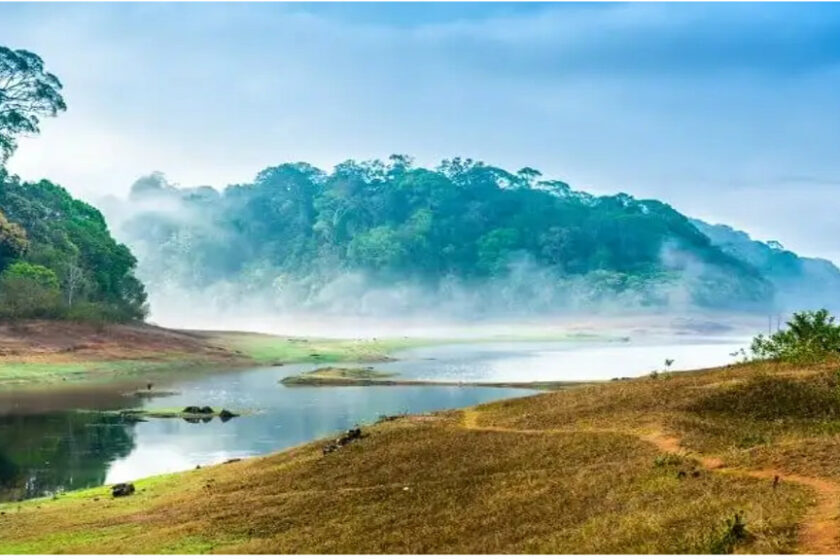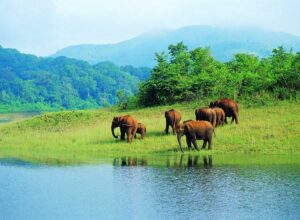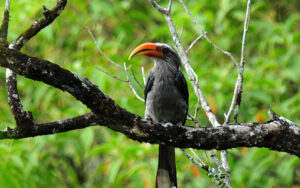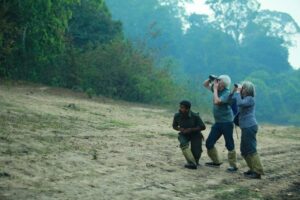Periyar National Park also known as Periyar Tiger Reserve is an important tourist location situated in the southern Indian state of Kerala. The park was established in 1934 as a wildlife sanctuary and was later declared a national park in 1978. As per many data’s the park covers an area of 925 square kilometers and is home to a wide variety of flora and fauna.
Periyar Tiger Reserve
The Periyar National Park’s is located in the Cardamom Hills. The parks varied topography includes tropical evergreen and semi-evergreen forests, grasslands, and shola forests. The park’s diverse ecosystem supports a wide variety of plant and animal life.
Periyar National Park Safari
One who visits Periyar National Park must visit the Periyar Lake which is one of the main attraction of the Periyar National Park. The lake is popularly known as a man-made lake that was created in 1895 as part of a hydroelectric project. The lake serves as a entertaining spot for the visitors where they can take boat rides to observe the animals in their natural habitat and also serves as a watering spot for park’s wildlife.
Periyar Safari Timings
Boat Cruise Safari Timings : 7:25 AM, 9:15 AM, 11:15 AM, 1:30 PM, 4:00 PM
Jeep Safari Timings :
- Night safari : 11.00 PM to 03.00 AM
- Full Day Safari : Max 03.00 PM Last entry
Elephant Safari : Every day for Half an Hour: 06.00 A.M. to 05.00 P.M.
Wildlife in Periyar National Park
During the Boat Ride one can see many animals, some of the most commonly observed species are elephants, tigers, leopards, bison, and deer. There are, now estimated counts of 40 tigers in the Periyar National Park. The major four species of primates are also found at Periyar – the rare lion-tailed macaque, the Nilgiri Langur, Gee’s Golden Langur, Common Langur and Bonnet Macaque.
Bird Life in Periyar National Park
The Periyar National Park is also home to a wide variety of birds including the Great Hornbill, the Malabar Grey Hornbill and the Great Indian Hornbill.
Cultures in Periyar National Park
Periyar National Park is also known for its rich cultural heritage. The local tribes, such as the Malayarayar and the Mannan, have lived in the area for centuries and have a deep understanding of the park’s ecosystem. Tourists can learn about their way of life and customs through cultural tours and tribal village visits. These tours also provide an opportunity for the tourists to learn about the unique traditional agricultural practices of the local tribes.
Other Activities at the Park
The park is a popular destination for ecotourism and wildlife enthusiasts. Visitors can participate in jungle trekking, bamboo rafting, and other adventure activities. The park also offers accommodation facilities, including tents and tree houses, for visitors to spend the night in the park. Tourists will be able to experience a unique night in the jungle.
Medicinal Plant in the Jungle
Periyar National Parks is also a home to a variety of medicinal plants. These plants have been traditionally used by the local tribes for treating various ailments. Tourists will be accompanied by a local guide explaining about all the details about the plants and their medicinal properties.
How to Reach Periyar National Park ?
One can Reach Periyar National Park by
By Air : Kochi (Cochin) at 200-kms or Madurai in Tamil Nadu at 140-kms is the nearest airports from Periyar.
By Rail : Kottayam at 114-kms is the nearest railway station from Periyar.
By Road : Kumily, the nearest town from Periyar is well served by both state and private buses from Kottayam, Ernakulam and Madurai in Tamil Nadu.
Periyar National Park is a unique and beautiful protected area that offers a wide variety of natural and cultural experiences. Its diverse wildlife, scenic beauty, and rich cultural heritage make it a must-visit destination for nature lovers and adventure seekers. The park’s conservation efforts and ecotourism initiatives also make it an important destination for those interested in sustainable tourism. The park’s unique ecosystem, rich biodiversity, and cultural heritage make it an important destination for both researchers and visitors alike. The park is a living example of how humans and nature can coexist in harmony, and it serves as a reminder of the importance of protecting and preserving our natural heritage for future generations



